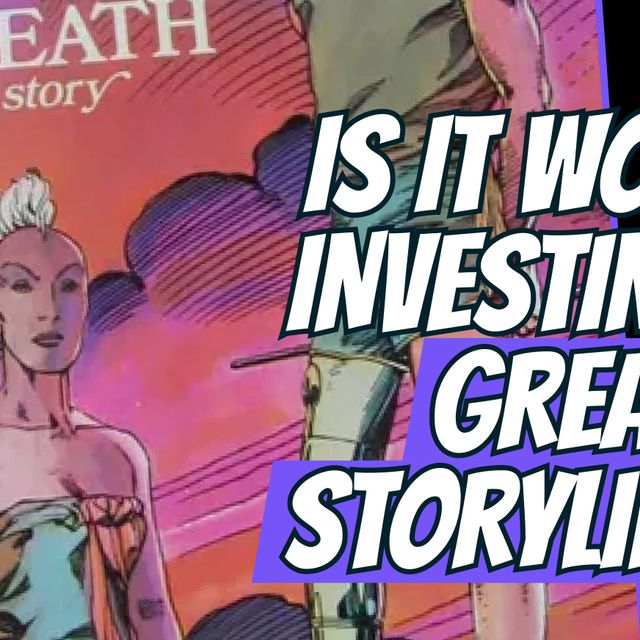
Published by Fiction House from 1940 to 1953, Planet Comics was one of the first science fiction comic books. The first issue of Planet Comics (cover dated January 1940) was, in fact, the first ever comic to solely publish science fiction as content cover to cover. And what content it was! In the first issue alone we get, Flint Baker fighting one-eyed monsters on Mars, Auro: the Lord of Jupiter, Spurt Hammond- Planet Flyer, the Red Comet (the magical “mystery man of the universe” from the year 2040), and much more. Although these stories obviously drew inspiration from Flash Gordon, they are actually the equivalent of a 1940s version of ‘Star Wars’ meets 'John Carter' in comic book form.
Planet Comics started out as a spin-off publication of the pulp magazine ‘Planet Stories’ (edited by Malcolm Reiss, which was the first magazine to ever publish Phillip K. Dick). The original issues of Planet Comics had a lot in common with their pulp cousin. For one thing, they focused on action and emphasized the daring of the sci-fi heroes they portrayed. Also, the stories always had obstacles for the heroes to overcome, mainly in the form of alien monsters threatening them or some beautiful but scantily clad ‘space women’ (these were published pre-code). Inevitably, the alien creatures were defeated, most often by blazing ray guns, and in the process worlds were saved. What’s surprising about these comics isn’t that they are valuable; it’s how much fun they are to read (every issue is available online here and worth checking out). Add to the fast-paced, offbeat stories some gorgeous retro art and I think you’d agree these comics make for both good investments as well as excellent additions to any collection.
Planet Comics #1 (January 1940) - First Auro, first Flint Baker and first Red Comet
‘Weird adventure on other worlds’ and ‘the universe of the future’ is what the blurb on the cover (drawn by Will Eisner & Lou Fine) promises the reader of Planet Comics #1. With the first issue’s cover portraying Flint Baker being chased by the one-eyed monsters of Mars and with Auro Lord of Jupiter written by Dick Briefer and many, many other treats awaiting the reader inside its 64 pages, this is the issue that started it all. This is extremely hard to find in decent condition. The CGC census lists 59 of these with most falling between a 1.8 and 7.5 grade. If you can find it in any grade, it’s valuable. A 1.0 sold for $1000.00 on Ebay May 31st, 2017.
Planet Comics #15 (November 1941) - Beginning of Mars, God of War stories
Although Planet Comics emphasized science, its stories were otherwise never big on realism. And even if we can perhaps forgive the inaccurate topology of the planets featured from month to month - almost all these stories were written before the space age proper had begun - the incidental details of the stories are often nonetheless still quite amusing. Jupiter, for example, has tigers living on it, Pluto has penguins, the space ships have steering wheels and radios on-board, and while most of the characters have ‘ray guns’, occasionally you get a character show up with an old fashioned handgun. Well, in issue #15 of Planet Comics, we get Mars the god of war. It’s Greco-Roman mythology in space. A 7.5 graded copy of this comic sold for $17,925.00 in Heritage auction on February 18, 2016 giving that grade of this comic a +2042.9% return on investment over the last seven years.
Planet Comics #38 (September 1945) - first appearance of Mysta of the Moon
The space women were obviously a big draw to the adolescent males who originally read these comics. Most of the planets visited in these stories are occupied by seductively dressed women. For example, in the first Spurt Hammond story, the moon is said to be inhabited by the Lunerzons (fierce women warriors who want to rule it). By issue #38, a female hero begins to grace the cover: it’s Mysta of the Moon. A floating Mysta, her shapely legs protruding from her short mini-skirt, actually adorns the cover of this issue. Mysta is a future scientist who guards the ‘knowledge discs’ and strives to bring 'peace and culture to this sad universe'. This is Mysta’s first appearance. A 9.6 of this issue sold for $2,185.00 on August 12, 2005 making this an affordable key in this series. Best returns have been seen on 6.0 graded copies with + 57.1% roi after the last two sales of $262.90 (on April 24, 2011) and $167.30 (on November 26, 2006).


